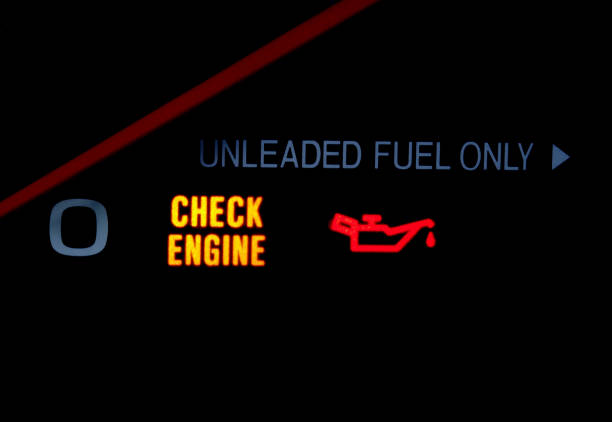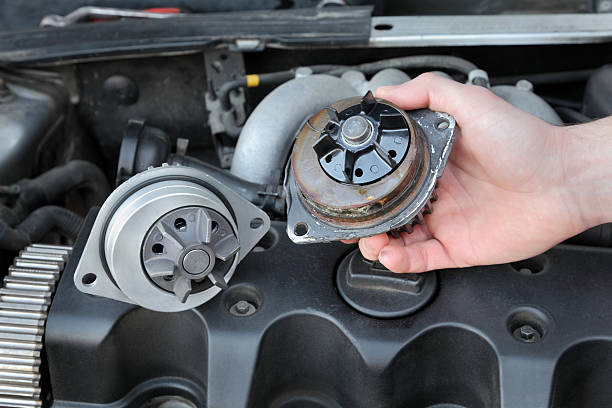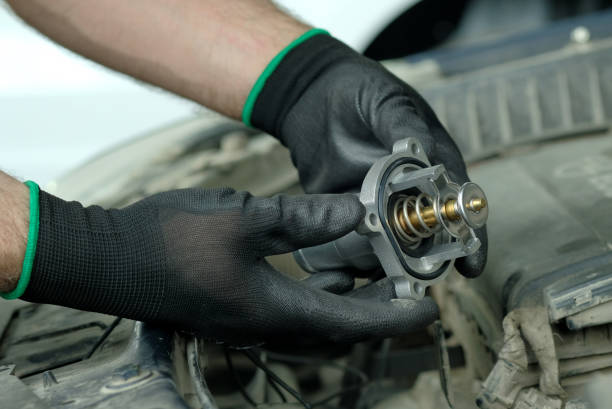
While your vehicle might have a ton of larger components that you think of, all the small components are essential to a smooth operation too. One of those small components that are essential to the smooth operation of your vehicle is the thermostat.
But what happens when the thermostat stops working the way it should and how much is it going to cost to get your vehicle back on the road? We’ll break down everything you need to know here.
How Your Car Thermostat Works
Before you can dive too far into the issues you might have with a faulty car thermostat you need to understand how the thermostat works and what it does in the first place.
The truth is that your car’s thermostat is a relatively simple component. It’s a valve that opens up once the coolant reaches a certain temperature. This sends the coolant throughout the rest of the engine and radiator to help cool everything down.
Once the temperature drops back below the preset point, the thermostat closes allowing the coolant to warm back before the thermostat opens back up again.
6 Bad Thermostat Symptoms
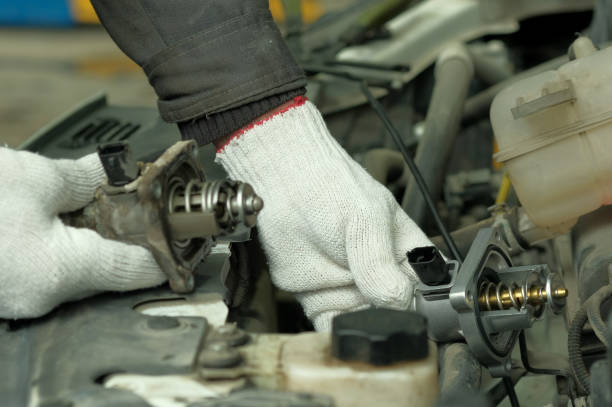
Before you go out and replace any components you need to pin down what the problem is. And that all starts with identifying the symptoms of a faulty thermostat. We’ve highlighted six different symptoms that could be saying your vehicle has a faulty thermostat.
1. Overheating Engine
The most common symptom of a faulty thermostat is an overheating engine. This happens when the thermostat fails in a closed position. When that happens the thermostat won’t open up and allow coolant to circulate throughout the engine.
Without the coolant the engine will overheat. Most engines have a failsafe that will shut off the engine when it reaches a certain temperature to keep it from blowing up, but that will still leave you stranded with a vehicle you can’t start up.
2. Engine Heats Up Slowly
While an overheating engine is the most common sign of a faulty thermostat, that won’t happen if the thermostat fails in the open position. When this happens, coolant is constantly circulating throughout your engine, which keeps your engine cooler than it should be.
Keep an eye on the temperature gauge inside your vehicle, and if it’s not heating up, that’s a classic sign of a faulty thermostat.
3. Fluctuating Engine Temperatures
Sometimes the thermostat doesn’t stay fully stuck in the open or closed position and it starts behaving erratically. When this happens it’s still a faulty thermostat, but you’re going to see the temperature gauge start jumping up and down at different times.
A properly functioning thermostat keeps your engine at the same temperature, a faulty one won’t do it very effectively.
4. Leaking Coolant
Your vehicle’s engine has a safety feature that dumps coolant out an overflow valve if it starts to get too hot. If the thermostat isn’t working properly, the engine and the coolant can get hotter than it should, and that will send the excess coolant out of the overflow valve.
Typically that overflow valve goes straight to the ground, and you’ll notice coolant on the ground when that happens.
5. Steaming Engine
While the coolant overflow valve typically goes straight to the ground, that’s not always the case. If the coolant dumps onto the hot engine, it’s going to create a lot of steam. There’s a good chance you’ll still end up with a lot of coolant on the ground, but you’ll also notice a lot of steam coming from the engine bay.
6. Fluctuating Heater Temperature
You generally don’t think of the heater inside your vehicle when you’re thinking of bad car thermostat symptoms, it’s more common than you might think.
That’s because the heater system in your vehicle works by passing air over the warm coolant. So if the coolant can’t get to or stay at the right temperature, you’ll notice problems with the heater system in your vehicle.
How To Fix a Faulty Thermostat
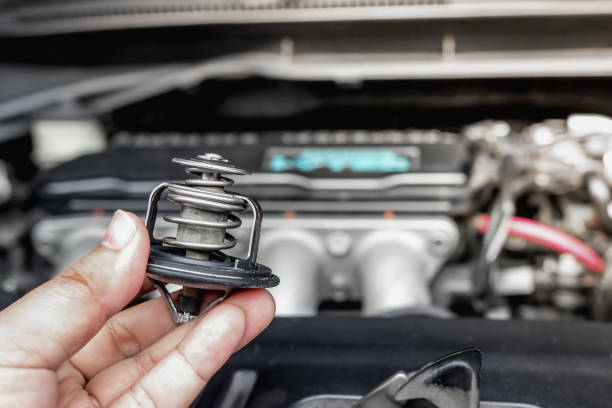
Once you’ve identified the common symptoms of a bad thermostat, it’s time to dive into how to fix the problem. Because your car’s thermostat is a relatively inexpensive component, it doesn’t make much sense to try and repair it.
Instead, all you need to do is take off the old thermostat and put a new one on. It’s generally a pretty straightforward repair. Take off the hose and the nuts holding the thermostat on and install the new one!
No matter what you do, never work on your vehicle’s cooling system when the coolant is hot. Wait until everything cools down. If your vehicle just overheated this means waiting at least 24 hours to let everything cool back down.
How Much Does It Cost to Replace a Thermostat?
While it would cost you at least $100 to have a professional mechanic diagnose and replace your thermostat, if you’re willing to do the work yourself you can save yourself quite a bit of money.
That’s because an aftermarket car thermostat typically only costs between $10 and $30. And since it’s one of the easiest components to replace, there’s no reason you can’t do it yourself and save yourself some money!
A typical car thermostat lasts about ten years, so even if it’s not the right fix the first time you’re not spending a ton and it’s a component you’d need to replace eventually anyway.
Final Thoughts
Now that you know a little more about how your car thermostat and signs that it’s failing, it’s up to you to figure out whether it’s the component you need to replace or not.
If you’re on the fence about whether or not the problem is the thermostat, we recommend replacing it anyway because of how little they cost and how easy they are to replace.






